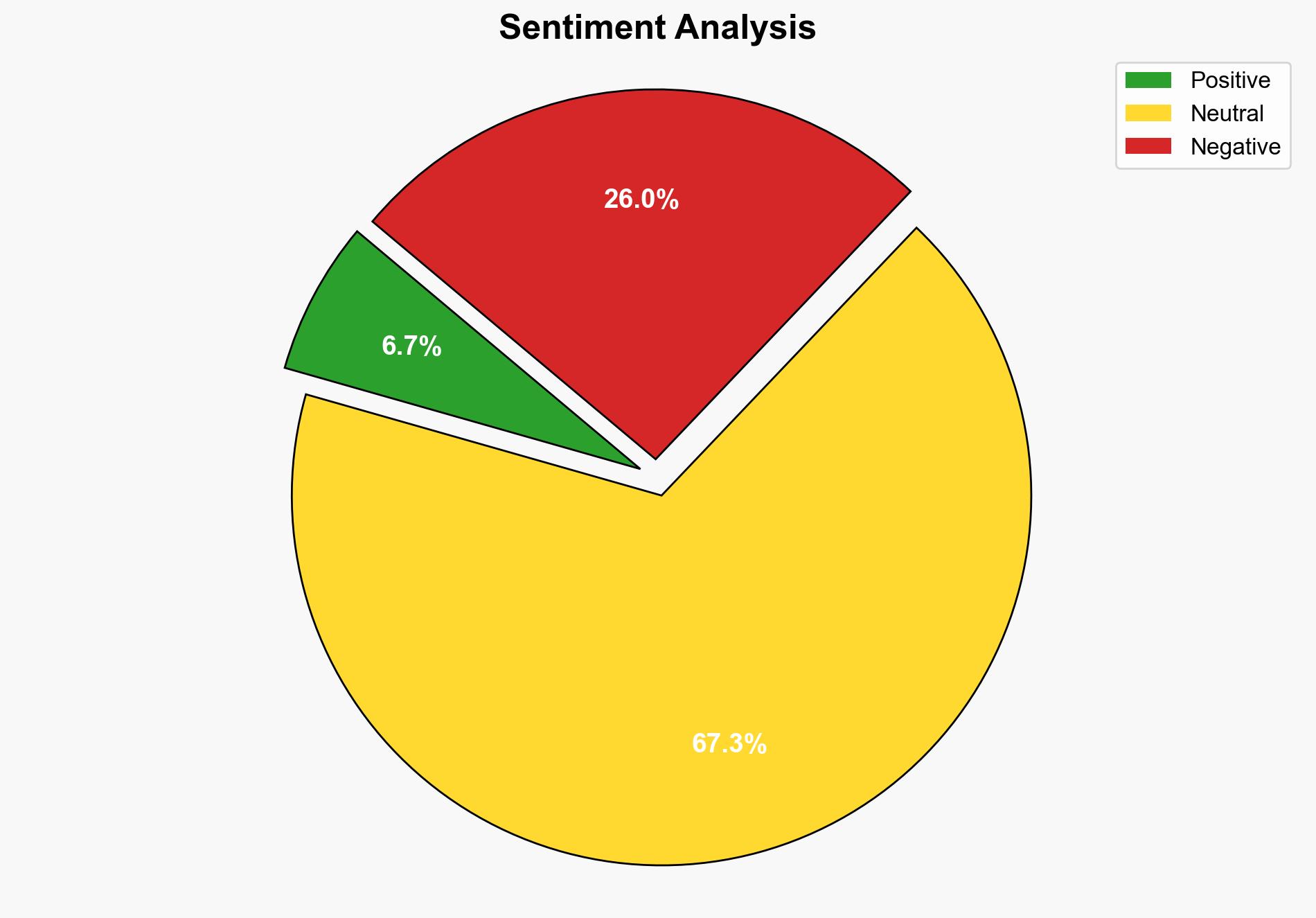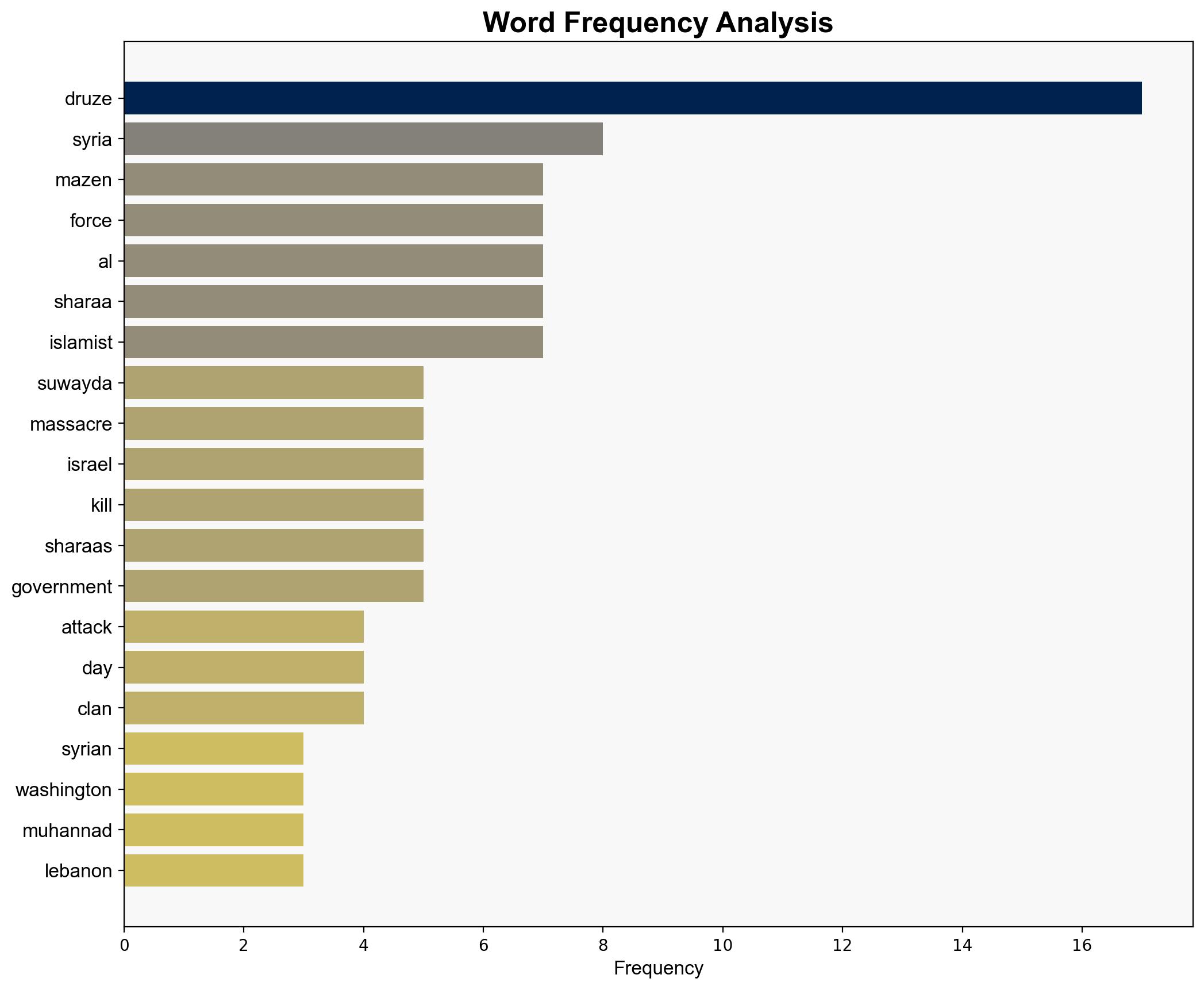Inside the harrowing attack on Syrias Druze and why the US first step in the right direction is vital – New York Post
Published on: 2025-07-27
Intelligence Report: Inside the harrowing attack on Syrias Druze and why the US first step in the right direction is vital – New York Post
1. BLUF (Bottom Line Up Front)
The most supported hypothesis is that the attack on Syria’s Druze was orchestrated by forces loyal to Ahmad al-Sharaa, using Islamist proxies to destabilize the region and consolidate power. This hypothesis is supported by multiple intelligence indicators, including the use of civilian disguises and the involvement of foreign fighters. The strategic recommendation is to increase diplomatic pressure on regional actors to prevent further escalation and to support humanitarian aid to affected populations. Confidence level: Moderate.
2. Competing Hypotheses
1. **Hypothesis A**: The attack was orchestrated by Ahmad al-Sharaa’s forces using Islamist proxies to destabilize the region and consolidate power. This is supported by reports of government fighters disguising as civilians and coordinating with foreign Islamist fighters.
2. **Hypothesis B**: The attack was a spontaneous tribal conflict, exacerbated by external Islamist elements, without direct orchestration by Sharaa. This is suggested by the narrative of tribal revenge and the involvement of various clans.
Using ACH 2.0, Hypothesis A is more likely due to the structured coordination and strategic objectives aligning with Sharaa’s interests, whereas Hypothesis B lacks cohesive strategic intent.
3. Key Assumptions and Red Flags
– **Assumptions**: Hypothesis A assumes a high level of coordination between Sharaa’s forces and Islamist groups, and that Sharaa’s strategic interests align with destabilizing the Druze region.
– **Red Flags**: The narrative of tribal conflict may be a deception to mask orchestrated actions. The lack of independent verification of events and potential bias in source reporting are significant concerns.
– **Blind Spots**: Limited visibility into the internal dynamics of Sharaa’s forces and potential external influences from regional powers.
4. Implications and Strategic Risks
The attack could lead to increased sectarian violence, destabilizing southern Syria and potentially drawing in regional powers like Israel and Lebanon. The humanitarian crisis could exacerbate, with significant displacement and loss of life. There is a risk of further entrenchment of extremist groups in the region, complicating future peace efforts.
5. Recommendations and Outlook
- Enhance intelligence-sharing with regional allies to monitor Sharaa’s activities and Islamist group movements.
- Support diplomatic efforts to mediate between conflicting parties and prevent further escalation.
- Provide humanitarian aid to affected populations to mitigate the immediate crisis.
- Scenario Projections:
- Best: Successful mediation leads to ceasefire and stabilization.
- Worst: Escalation into broader regional conflict involving multiple state actors.
- Most Likely: Continued low-intensity conflict with periodic escalations.
6. Key Individuals and Entities
– Ahmad al-Sharaa
– Mazen Suwayda
– Muhannad Makram
– Hussain al Salama
– Youssef al Hajr
– Muhammad al Jassim (Abu Amsheh)
7. Thematic Tags
national security threats, counter-terrorism, regional focus, humanitarian crisis





